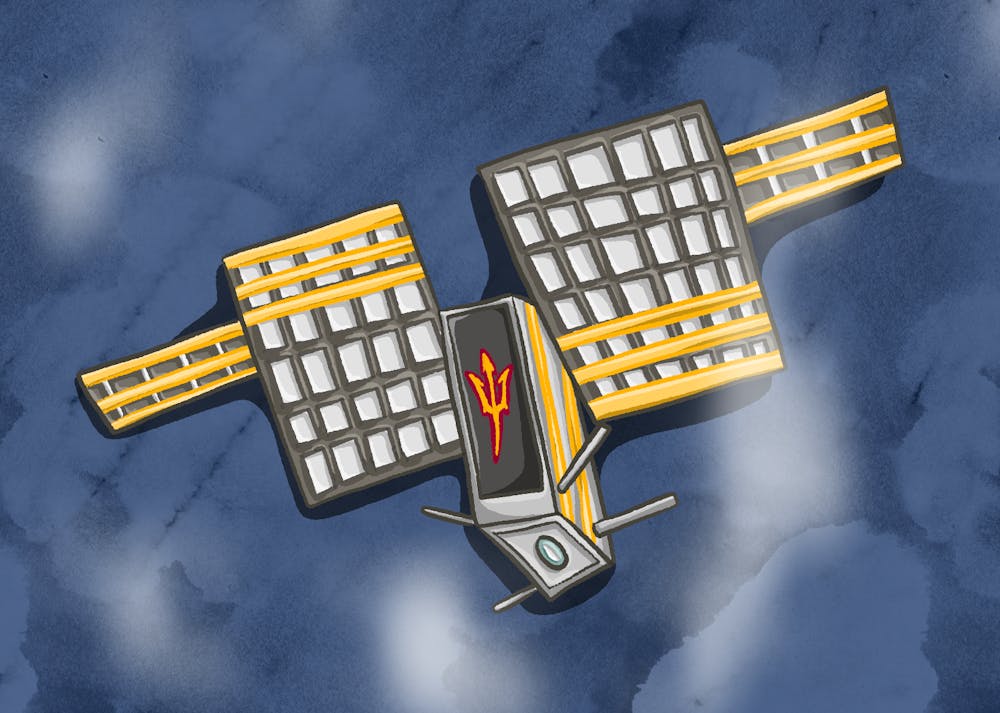A satellite designed by ASU researchers to detect evidence of water-ice on the moon will begin its journey through space on NASA's Artemis 1 mission, scheduled to launch later this month.
NASA's Lunar Polar Hydrogen Mapper, or LunaH-Map, was designed by ASU researchers and is the first ASU-led NASA mission. The small satellite, about the size of a shoebox, will orbit the moon to collect data about water-ice that has formed on permanently shadowed regions of the moon's surface.
The water-ice on the moon came from comets and asteroids from the outer solar system that impacted the lunar surface, so studying it could help scientists understand more about the outer solar system.
Astronauts could harness the water-ice as a resource by turning it into drinkable water and extracting hydrogen and oxygen to make rocket fuel. This could be a cheaper alternative than having to send those resources from Earth into space.
"People will need water; people will need oxygen; people will need rocket fuel," said Jim Bell, deputy principal investigator of the LunaH-Map mission. "We can bring it all from the Earth, but it's costly."
What has made LunaH-Map different and more challenging to build than other NASA missions is that all its parts had to be made from scratch. Most other satellites are not built at such a small scale, said Craig Hardgrove, principal investigator of the LunaH-Map mission.
"On most NASA missions, a lot of that technology has already been developed, and it's already worked," Hardgrove said. "It's already flown in space. It's already achieved the mission at a different planet or in a different place. And so, in our case, it hasn't been done before."
LunaH-Map's total cost will be around 2% of an average NASA planetary science mission, which can sometimes cost up to a billion dollars, making it comparatively cheaper. The small satellite could open the doors for more smaller budget space missions in the future, Hardgrove said.
The Artemis missions will attempt to establish a long-term presence on the moon by creating a base camp on the lunar surface where astronauts can live and conduct research, according to NASA. The Artemis 1 mission will send an uncrewed flight of the Orion space capsule on a journey around the moon in preparation for landing the first woman and first person of color, according to NASA.
As the Orion space capsule orbits the moon, so will the LunaH-Map. The small satellite will try to detect the presence of water-ice on the moon's poles, where some of the moon's surface never sees sunlight.
LunaH-Map's mission duration depends on how quickly it falls into the moon's gravity. Depending on the alignment of the Earth, sun and moon on launch day, the mission could last years.
"If we have an unfavorable launch period, our mission could take up to three years to complete," Hardgrove said. "If we have a favorable launch period, our mission could take a little over a year to complete."
But before LunaH-Map can get to the moon, it has to exit the Orion spacecraft.
As the Orion spacecraft heads toward the moon, LunaH-Map will be ejected from the spacecraft as a secondary payload. This works by using a spring system on the craft that safely and slowly launches the small satellite without doing any damage, Bell said.
"It's like a mini, very slow-motion kind of gun," Bell said.
LunaH-Map will orbit the moon roughly 300 times, once it is finished it will deorbit by crashing into the moon, Hardgrove said.

Kaden is a reporter for the Biztech desk, focusing on student run business, people profiles and research papers. During his time at The State Press, Kaden's biggest piece was about ASU's history with NASA. He's a sophomore majoring in Journalism and Mass Communication.

Tyson Wildman is a reporter for the State Press SciTech desk. He is excited to begin his journey into journalism and continue to hone his skills as a writer. He is pursuing a bachelor's degree in Mass Communication and Media Studies.




